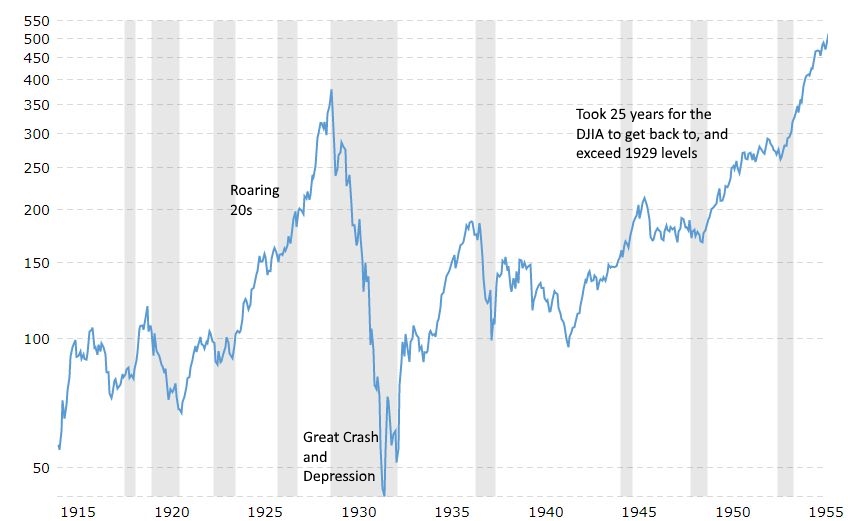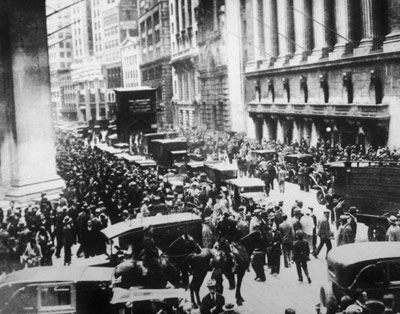Learn the history of the Great Crash, which saw stock prices decline almost 90% between 1929 and 1932.
When people talk about the 1929 Crash, Great Crash, or Great Depression they’re talking about the events leading up to the 1929 stock market crash and the economic depression that followed.
The 1929 stock market crash is also known for some specific dates: Black Thursday (October 24, 1929) when the Dow Jones Industrial Average (DJIA) lost 11%, Black Monday (October 28, 1929) when the DJIA lost 13%, and Black Tuesday (October 29, 1929) when the DJIA lost 12%.
Stock market crashes follow price increases. Between 1919 and 1929 the DJIA rallied from 80 to a 1929 (Sept. 3) peak of 381.17. A 476% gain.

Source: macrotrends.net
Selling continued after Black Tuesday into November 13, 1929, were the market formed a temporary bottom at 198.6, a drop of 48%. The market recovered somewhat over the next year, reaching a high of 294.07 on April 17, 1930. This was not the end of the selling though. Prices continued lower into 1932 where they bottomed at 41.22 on July 8, 1932, a level never seen again. That concluded an 89% drop from the 1929 high. It took until 1954 for the price to reach the 1929 high again. Even though the stock market has risen consistently over time, it often takes many years for most investors to recoup their capital after a crash.

October 1929 crowds gather on Wall Street
The economic depression lasted from 1929 to 1939, where unemployment was over 15% much of the time and tax revenue, corporate profits, and personal income were cut in half.
While there are multiple variables at play in any crash and depression, there are three main elements which drive stock prices rapidly higher and then hammer them lower.













Leave A Comment